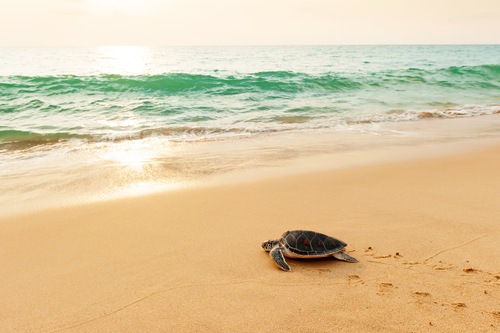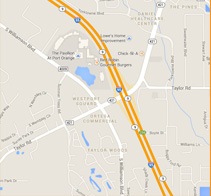
First Sea Turtle Nest of the Year

With the heat back in Florida and a weekend forecast of 85 degrees plus, the beaches will be crowded - which means it's time to be aware of sea turtle nests and what you can do to help their survival. The first sea turtle nest of 2024 was found in Ormond Beach last week, bringing about an early start to a much-anticipated nesting season, which officially begins on May 1. This early nesting could signal a bustling few months ahead as hundreds of sea turtles are expected to visit the county's shores to lay their eggs.
After a two-month incubation in the sand, hatchlings will emerge, navigating numerous challenges as they scramble to the ocean. It's estimated that only about one in 1,000 to 10,000 hatchlings will survive to adulthood, which can take 10 to 25 years, depending on the species.
Jaymie Reneker, manager of the County's Sea Turtle Habitat Conservation Plan (HCP), is spearheading efforts to improve these odds with the community's assistance. "Our goal is to make Volusia County beaches safe and inviting for humans and sea turtles alike," said Reneker. "We encourage everyone to let the night provide light on our coastline, minimizing the use of artificial lighting."
The County's Environmental Management Division continuously educates beachfront property owners about sea turtle-friendly practices, especially regarding lighting. During the nesting season, it is crucial to shield, redirect, or turn off lights that could shine on the beach in accordance with local sea turtle lighting ordinances. The HCP program provides free educational materials to property owners, who can order these resources through the program's website.
Residents and visitors can further contribute to sea turtle conservation by adhering to guidelines such as not touching or disturbing the turtles or their nests, using designated beach access points, driving only in designated areas, avoiding flash photography and cellphone lights at night, and using red LED flashlights. After beach visits, it is essential to flatten sandcastles, fill in holes, and remove all beach gear to avoid hindering the turtles' journey to the sea. Proper trash disposal and avoiding fireworks are also crucial to protecting the nesting turtles.
For more information about Volusia County's sea turtle program or questions about sea turtle-friendly lighting, call 386-238-4773 or 386-238-4668 or visit www.volusiaseaturtles.org. The nesting season runs through Oct. 31, and with more than 580 nests typically laid each season and last year's peak at 1,516 nests, the highest ever recorded, community support is vital for continuing this positive trend.
Bookmark & Share
User Comments
Be the first to comment on this post below!
Previous Article
Next Article
Most Popular Articles
- DUI Checkpoint to Run This Weekend on Dunlawton
- Some City Residents Advised to Boil Water Through Wednesday
- Detectives Believe Body Found in Daytona is that of Murder Suspect
- Mosquito-Borne Illnesses Increase in Volusia County
- Port Orange Woman Wins $750,000 On Scratch Off
- Police Seeking Person of Interest in Port Orange Death
- Port Orange Fire Department Deploys to Florida Panhandle
- Just Us Girls Event to Feature Charity Auction for Murder Victim?s Family











